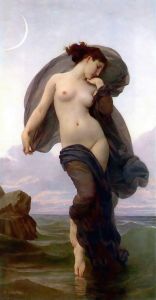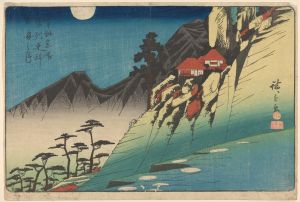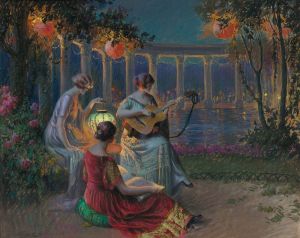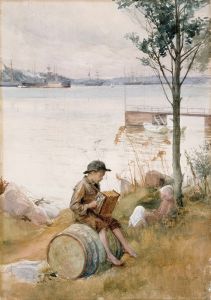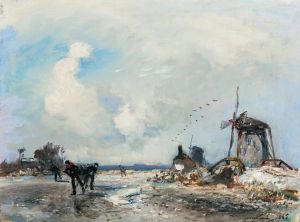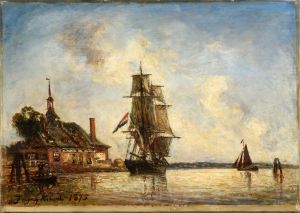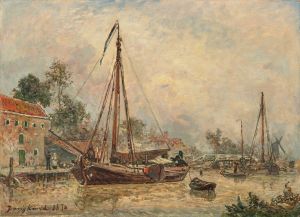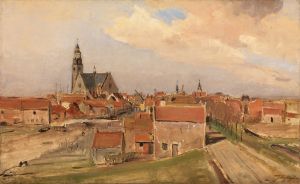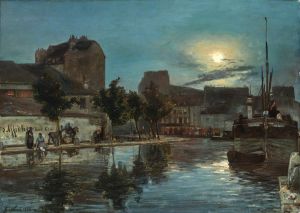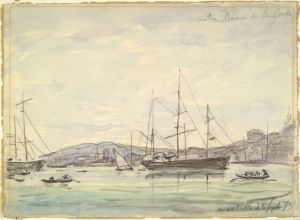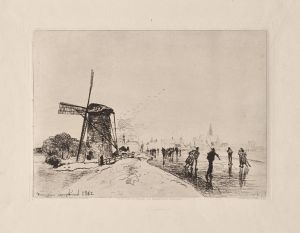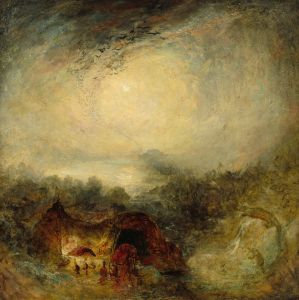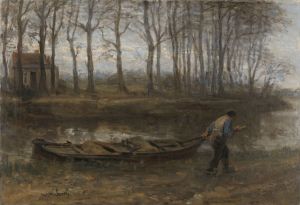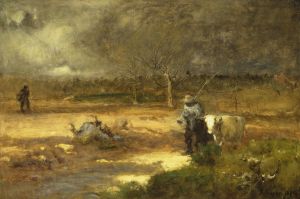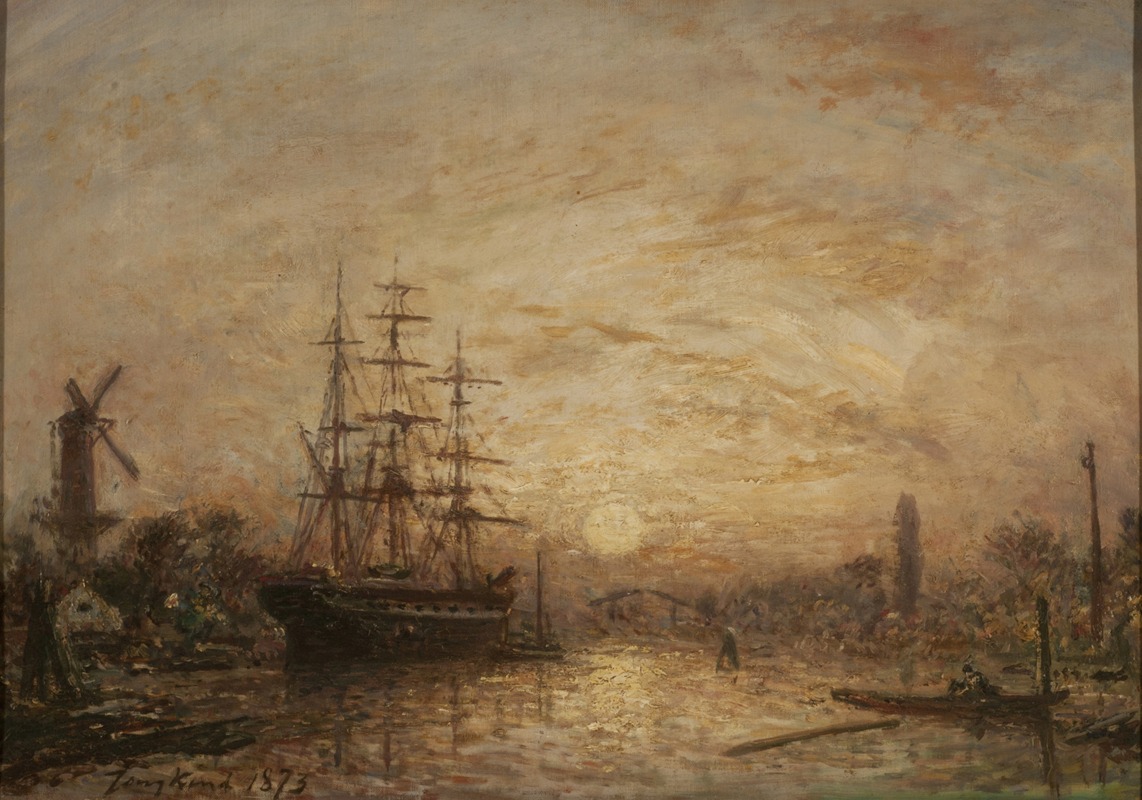
Coucher de soleil en Hollande
A hand-painted replica of Johan Barthold Jongkind’s masterpiece Coucher de soleil en Hollande, meticulously crafted by professional artists to capture the true essence of the original. Each piece is created with museum-quality canvas and rare mineral pigments, carefully painted by experienced artists with delicate brushstrokes and rich, layered colors to perfectly recreate the texture of the original artwork. Unlike machine-printed reproductions, this hand-painted version brings the painting to life, infused with the artist’s emotions and skill in every stroke. Whether for personal collection or home decoration, it instantly elevates the artistic atmosphere of any space.
Johan Barthold Jongkind, a Dutch painter and printmaker, is widely regarded as a precursor to the Impressionist movement. His painting Coucher de soleil en Hollande (translated as Sunset in Holland) is an exemplary work that reflects his mastery of light, atmosphere, and landscape. Created during the 19th century, this artwork showcases Jongkind's ability to capture the subtle interplay of light and color, which became a hallmark of his style.
Jongkind was born in Lattrop, Netherlands, in 1819 and spent much of his career in France, where he became associated with artists such as Eugène Boudin and Claude Monet. Despite his connections to the French art scene, Jongkind often returned to his Dutch roots for inspiration, and Coucher de soleil en Hollande is one such example. The painting depicts a serene Dutch landscape at sunset, with a focus on the expansive sky and its reflection in the water below. This emphasis on atmospheric effects and the natural environment is characteristic of Jongkind's work.
The composition of Coucher de soleil en Hollande highlights Jongkind's skill in rendering the nuances of light. The warm hues of the setting sun are delicately balanced with cooler tones, creating a harmonious and tranquil scene. The inclusion of traditional Dutch elements, such as windmills and waterways, grounds the painting in its cultural context, while the loose, fluid brushstrokes hint at the Impressionist techniques that would later influence artists like Monet.
Jongkind's approach to painting was innovative for his time. He often worked en plein air (outdoors), directly observing and sketching his surroundings before completing his works in the studio. This method allowed him to capture the fleeting effects of light and weather with remarkable accuracy. His ability to convey mood and atmosphere in his landscapes earned him recognition among his contemporaries and later generations of artists.
While specific details about the creation and current location of Coucher de soleil en Hollande are not widely documented, the painting remains an important example of Jongkind's contribution to the development of modern landscape painting. His work bridges the gap between the Romantic tradition and the emerging Impressionist movement, making him a pivotal figure in 19th-century art history.
Jongkind passed away in 1891, but his legacy endures through his evocative landscapes and his influence on the Impressionist masters who followed him. Coucher de soleil en Hollande stands as a testament to his artistic vision and his deep connection to the Dutch landscape.





